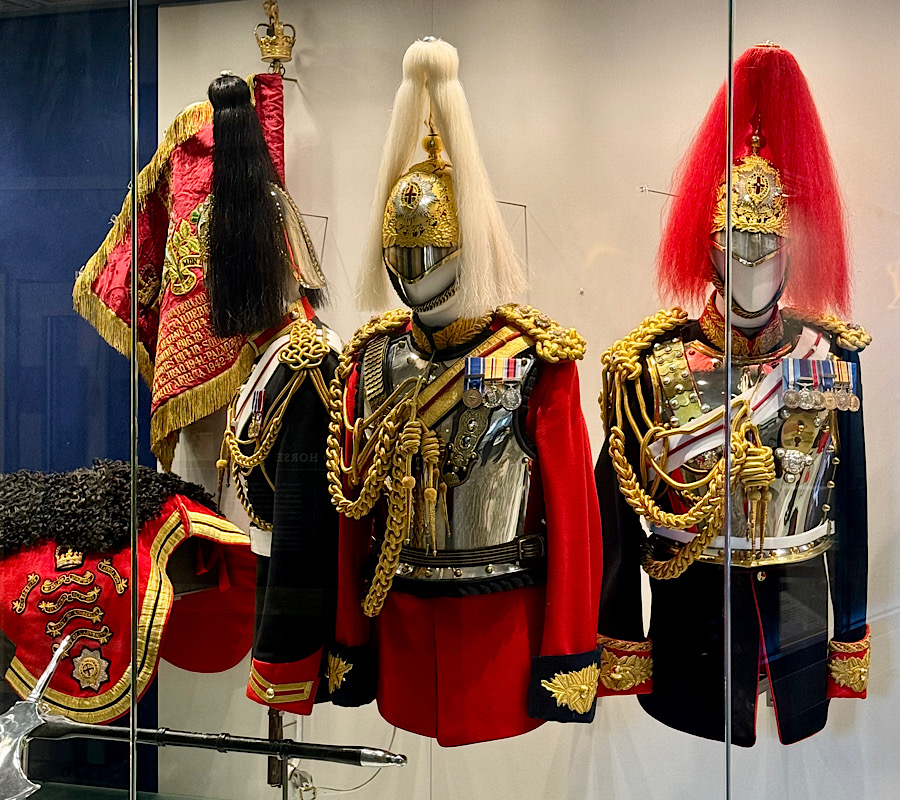Household Cavalry Museum has been on my little London bucket list for the longest time. Finally, I visited a few weeks ago and happened to see a ‘long guard change’. I will explain more on what that is later, but it ticked every box. I was living my best morning, with Luke as my guide for the morning.
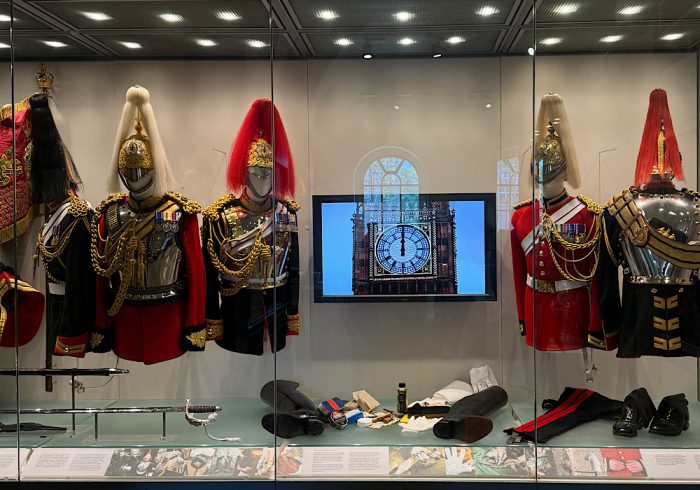
This little museum is a museum steeped in British army history. The Household Cavalry are the oldest regiment in the army, so imagine what stories you can discover. I was amazed to discover that Horseguards was the original entrance to Buckingham Palace.
Since 2007 the museum has been on the original building / stable with the entrance directly onto Horseguards. So if you are coming to see the ‘Guard Change’, then visiting this museum is a no brainer. It ties in the rich history of the Household Cavalry regiment.
Guard Change at Horseguards
Since the coronation of King Charles III, guard changes Monday, Wednesday and Friday’s.
The ‘long guard’ change only happens when the King is in London. It involves 16-17 solders, an officer, a Standard bearer and a trumpeter.
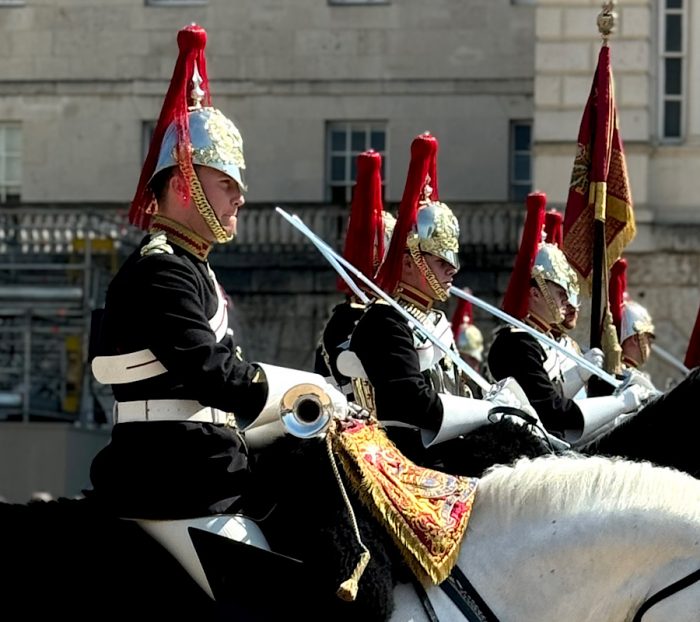
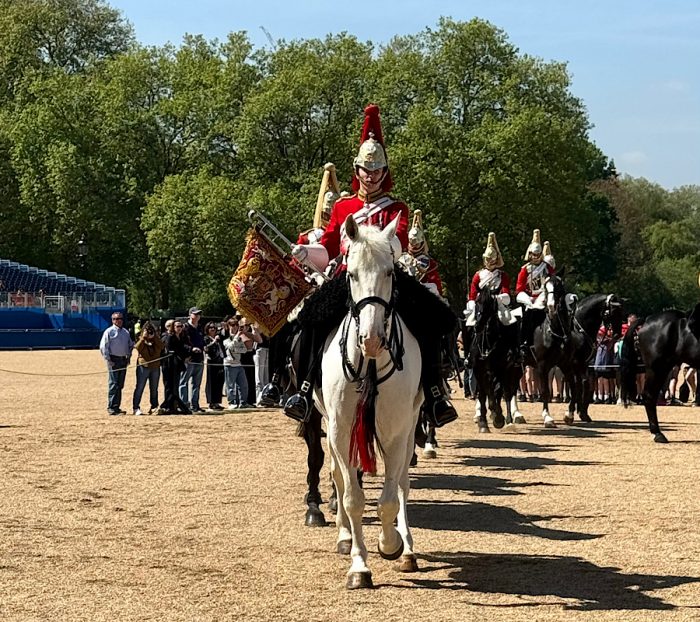
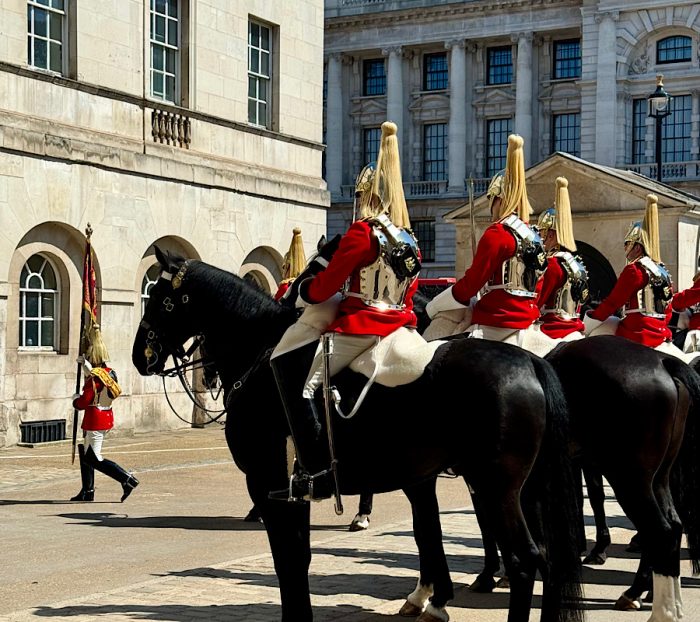
A ‘short guard’ change doesn’t involve the Royal Standard or the trumpeter.
With each guard change The Standard is kept within Horseguards, acknowledging that the King is in the city. If the King leaves London, the Royal Standard then returns to the barracks in Knightsbridge.
In 1894 Queen Victoria came home to find soldiers asleep, drunk and disorderly and decided things needed to change. A tradition that continues to this day, is that she decreed an officer comes down daily (now from Knightsbridge Barracks) at 4pm to dismiss the mounted guard at Horseguards.
On Tuesday, Thursday and the weekend a group of six guards will go out on a circuit of St James’s and come back for 11am and do a short inspection on Horseguards that lasts about 10/15 minutes.
7 Fun Facts about the Household Cavalry and their Museum;
I thought it would be fun to share 7 facts on this historical and ceremonial museum in the very heart of London military life. Integral to London pageantry and the working life of The King’s Mounted Bodyguard.
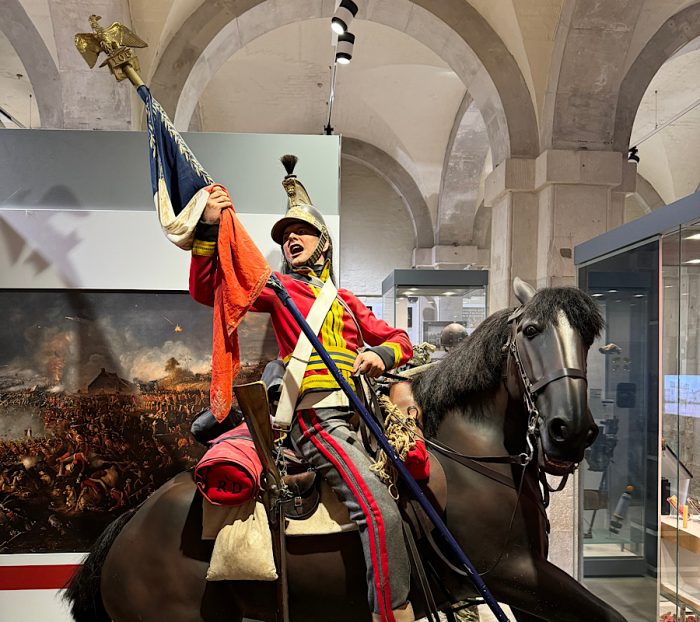
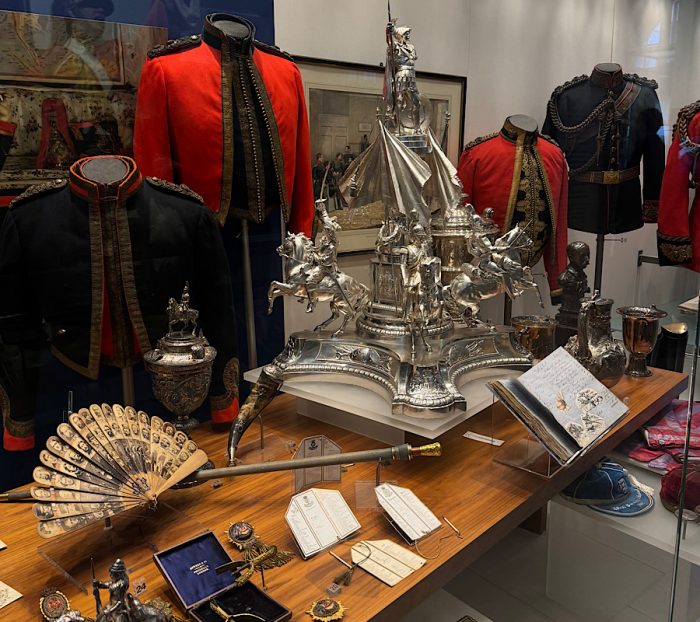
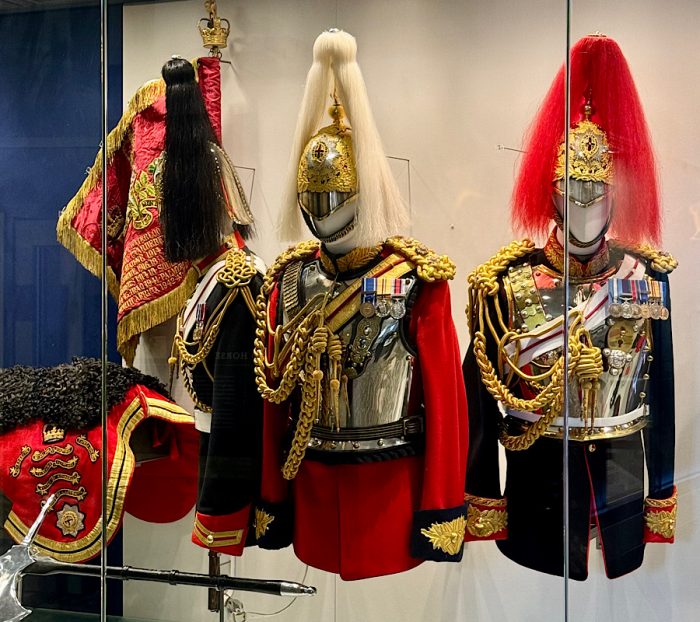
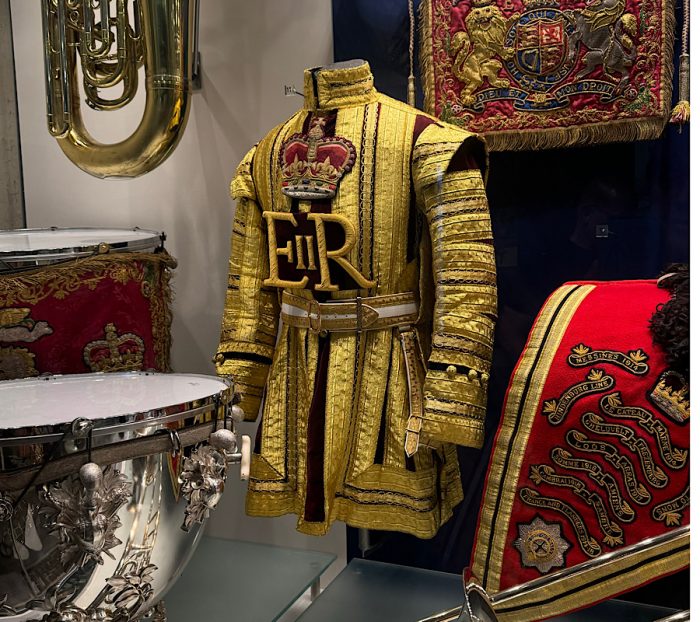
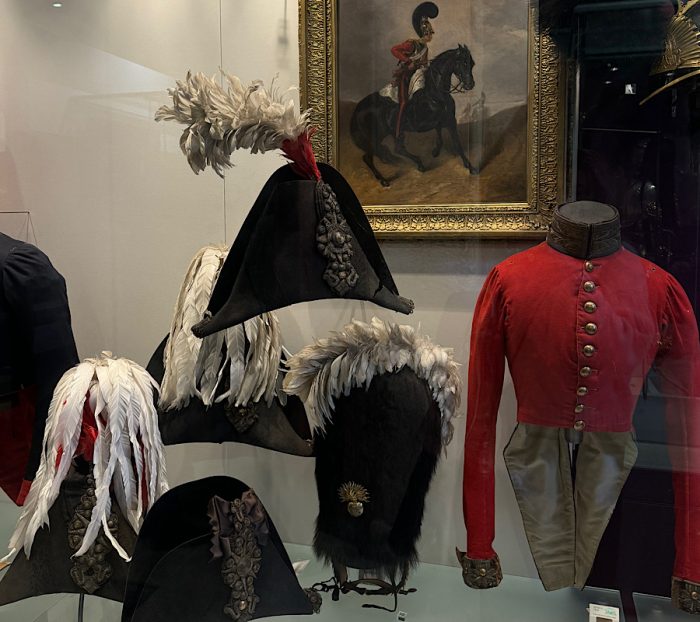
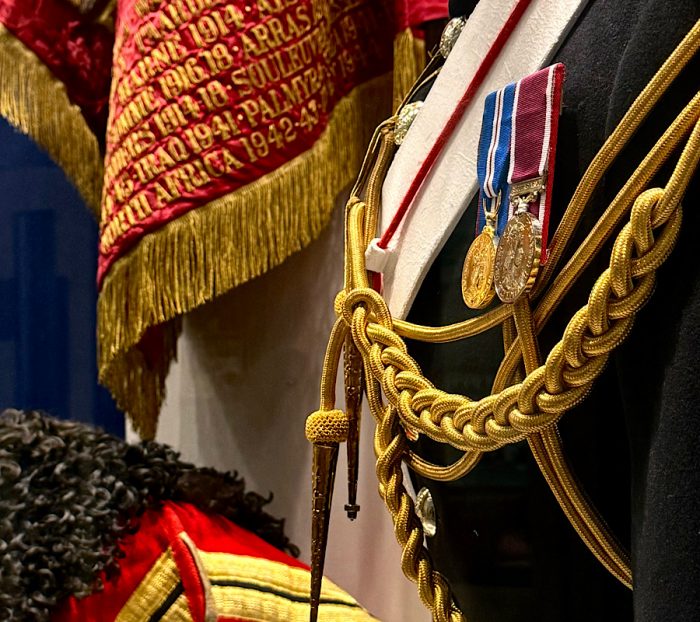
- The Lifeguards are the oldest regiment in the army.
- Since 1660 Horseguards is manned by the two regiments of the HHC. The Lifeguards (Red uniform with white plume) and the Blues and Royals (Blue uniform with red plume).
- It takes between 10-14 hours to clean the uniform ready for parade. The boots alone can take 2-4 hours to clean alone.
- The musician’s coat hasn’t changed since 1660. The only thing that has changed is the cipher.
- The stables can house up to 20 horses, but usually there are about 16. The horses are a minimum of 16 hands high. They are all Irish draught horses with a mixture of mares and geldings.
- Prince Albert updated the uniform on something he’d seen in his homeland Germany. It hasn’t been altered since then.
- Medals: There are lots of them… The most decorated serving soldier in the British army is from the Household Cavalry. His name is Michael Flynn CGC MC aka Bullet Magnet.
There are two Olympic medals from the London Olympics in 1908 won by Lieutenant Colonel John Jacob Astor.
Corrie Mapp. Former Lance Corporal with the Lifeguards, he is a multiple World Cup, World Championship and European Championship medalist in Para Bobsleigh. Including 3 medals at The Invictus Games.
You will also find the football cap of Trooper Charlton aka Jackie Charlton OBE. He went on to be part of the winning 1966 team of the England World Cup squad. There is also the first medal awarded to ‘Freddy’ the only horse to return from the Boer War. It’s beyond impressive
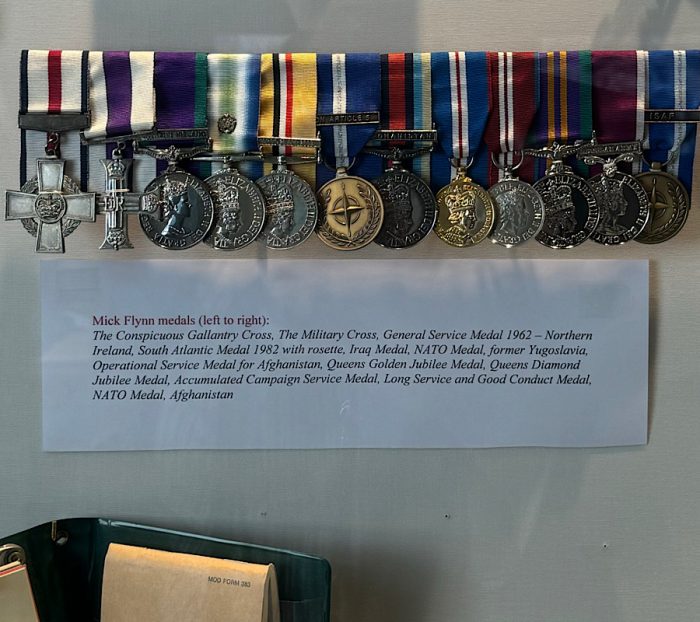
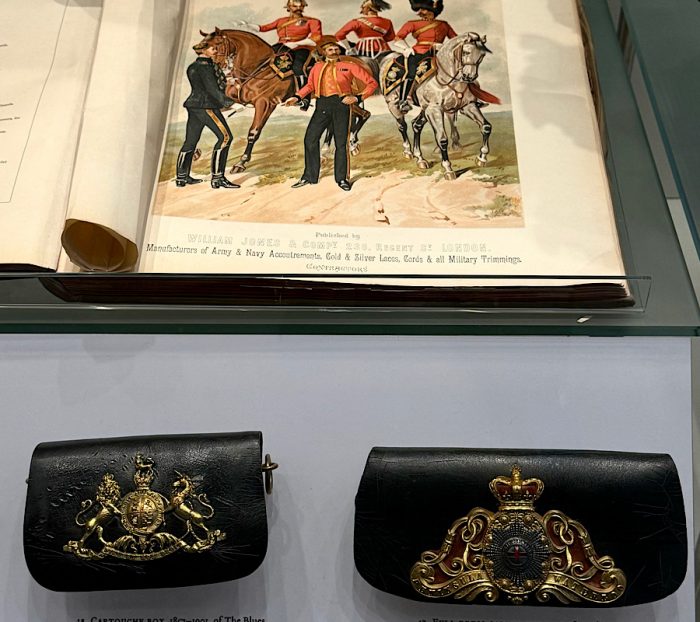
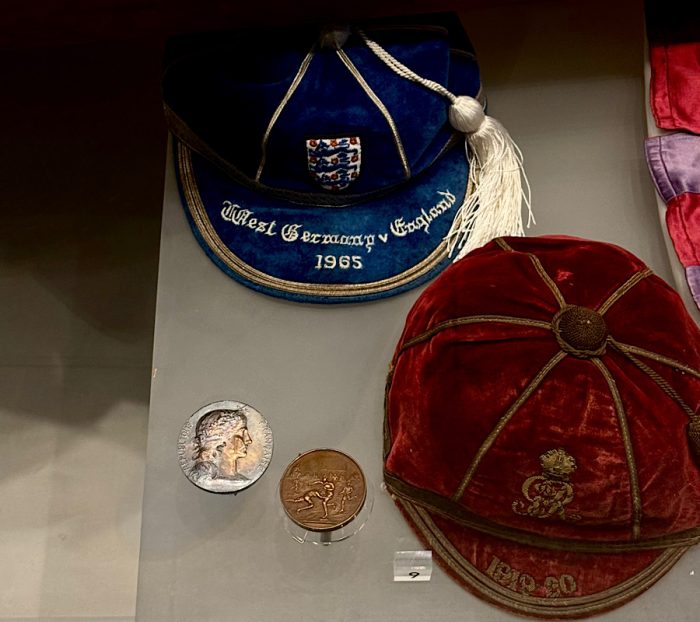
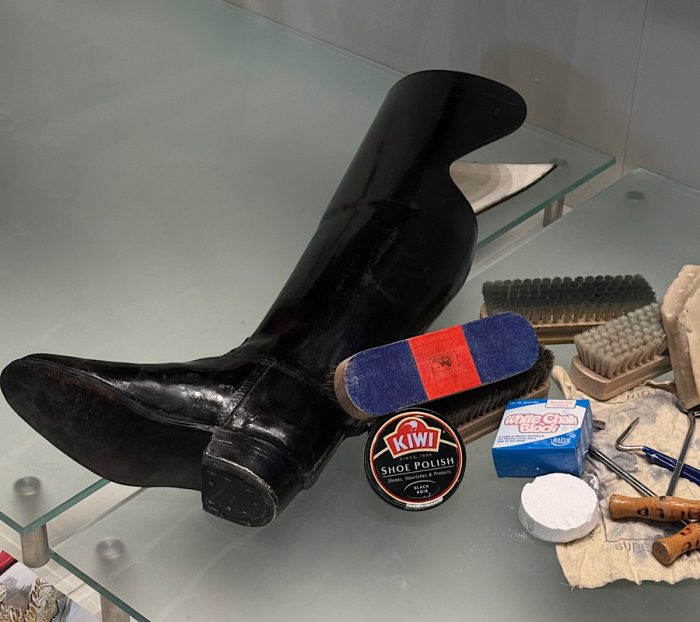
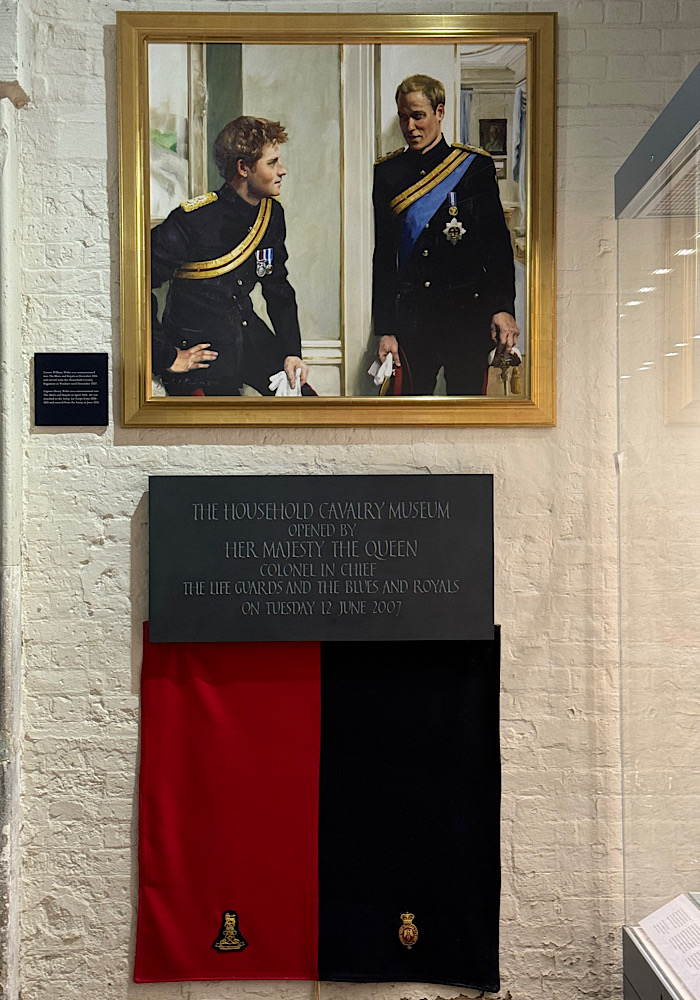
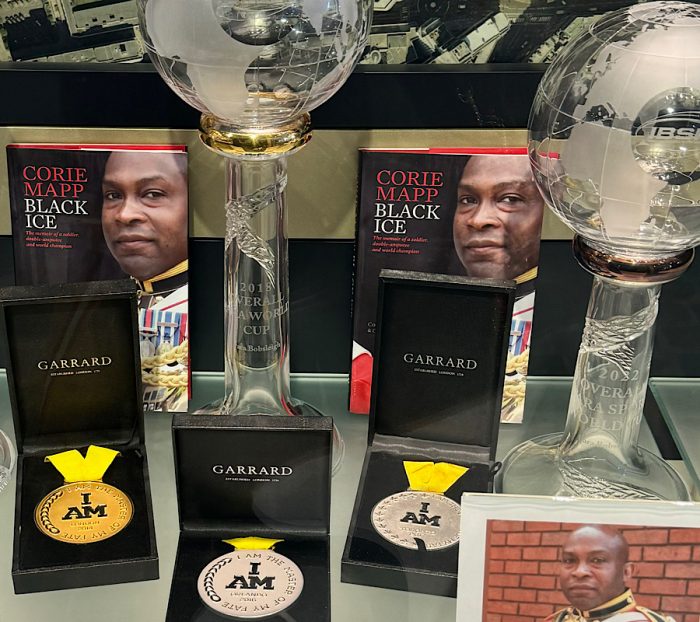
Household Cavalry Museum details
Daily tickets: Adults £10, concessions £8 Family £27.50 (2 adults & 3 children under 16)
Guided Tours : £75.00 for an hour with 15 people or more.
If you are a group I can highly recommend doing a tour, it just elevates your experience with a story at every cabinet.
HHC website for booking online.

